Every Way Sekiro Isn’t a Souls Game
One Singular, Voiced Hero
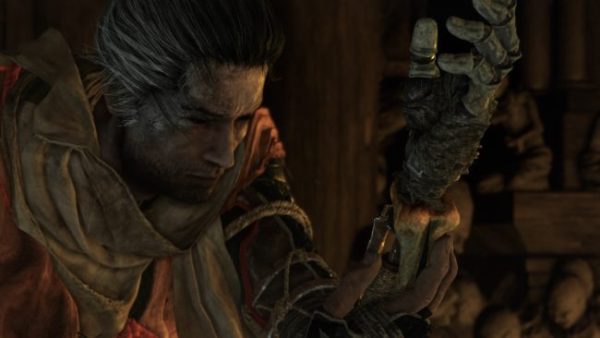
Souls games have always let you create your own character, someone that is purely used as a cipher for the player. While Souls games have always been packed with story and lore, a lot of it was indirectly told through item descriptions and hidden things.
Sekiro: Shadows Die Twice, on the other hand, tries to tell its story much more directly through cutscenes and dialogue, as well as a voiced main character. The “One-Armed Wold” is a disgraced shinobi, who’s been left for dead after his arm was cut off and his master is taken.
Obviously, this is a huge change for FromSoftware’s Souls-style games, as they very much want you to know who the main hero is, and there’s no sort of customization you’ll be doing in terms of looks and clothing.
Single Player Only
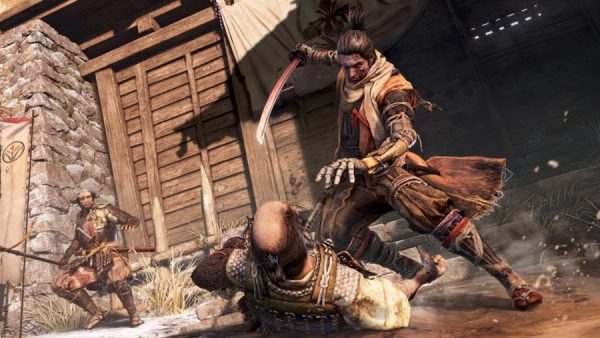
To add on to the emphasis of the main character, Sekiro doesn’t feature multiplayer in any shape or form. Souls games were always single player centric, but the brilliant multiplayer system allowed you to help out friends, invade other player’s games, and have player’s invade your own game.
Sekiro does away with all of that, but it certainly doesn’t suffer for it. The difficulty is fine-tuned for single player, and there’s still a vibrant and deadly world to explore. The larger emphasis on story also translates to a more enjoyable single player experience.
Every Way Sekiro Isn’t a Souls Game
Posture Mechanic
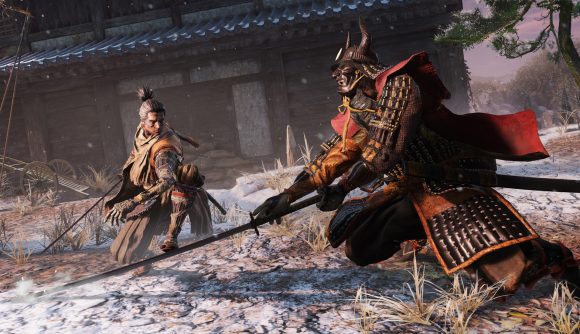
The biggest change for Sekiro comes with its Posture mechanic, a stat that affects both you and the enemy equally. Souls games always allowed you to block and parry, but Sekiro absolutely demands that you parry, or suffer for not.
An orange bar appears below the enemy’s health and on the bottom of your screen, and this represents yours and the enemy’s posture.
The bar goes up as you block or get hit, and once full you become staggered and completely open to attack. Of course, the same holds true for the enemy. This makes Sekiro’s combat feel very tactical and exact, as you need to wear down enemy’s posture while trying to protect your own.
You still have a dodge button, but combat in Sekiro is almost entirely focused on timing your blocks in order to deflect an attack, and inflict huge damage on your enemy’s posture. It’s a complex system that feels extremely different from the methodical combat of Souls.
Only One Weapon But Shinobi Prosthetics

Also adding onto the changed combat in Sekiro is the fact that you only have one main weapon to use, the Wolf’s trusty katana. You won’t be able to equip different weapon types like in a Souls game, however, there is still variation to combat.
On top of a wealth of different skills you can learn, Sekiro gives you a number of different Shinobi Prosthetic Tools, each of which has a different function. For example, one Prosthetic lets you shoot shurikens at an enemy, while another lets you use a massive axe attack that has a decent amount of wind up time.
You can equip up to three different prosthetics at any time and swap between them on the fly, but their use is dictated by a resource called Spirit Emblems. Each prosthetic uses a number of Emblems each time you use it, and the items can be bought from Sculptor’s Idols, dropped from enemies, or simply found lying around.
Every Way Sekiro Isn’t a Souls Game
Skill Points Instead of Stats
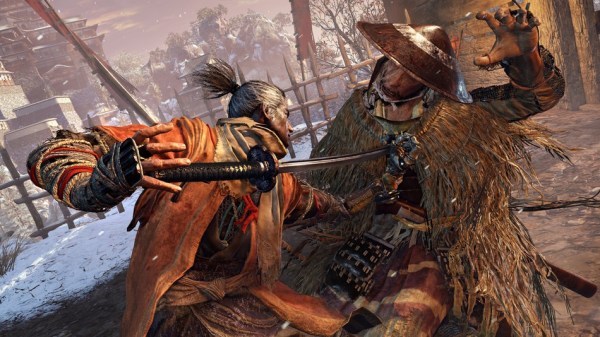
Sekiro heavily simplifies the process of gaining experience, as there are only two kinds of stats you need to keep track of, instead of a whole bunch like in Souls. Vitality dictates the amount of health you have, while Attack Power dictates how much damage you cause. Both stats can be raised through items you gain by defeating bosses or strong enemies, or occasionally found in the world.
However, there’s still experience. It just comes in the form of skill points. There’s a huge selection of different skills you can learn, some of which give you new combat moves, some of which increase the amount of items you can carry, and some of which grant helpful abilities, like recovering HP each time you do a deathblow.
This still allows for a good amount of playstyle customization, as you’ll need to decide which skills you want to invest in first.
Ressurection and Unseen Aid
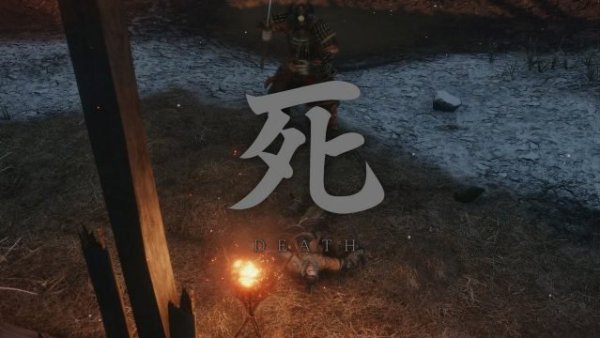
Sekiro is just as unrelenting as a Souls game in its difficulty, and death can be punishing, but the ways to work around death are different this time. In a Souls game, when you die you always have a chance to return to your spot of death and reclaim all of your lost experience points, or Souls. This doesn’t exist in Sekiro, as each time you die you lose half of your experience and money.
However, a new Ressurection mechanic will let you stand up one time right where you died and continue fighting. It comes at a cost though. Another mechanic called Unseen Aid gives you a percentage chance of retaining all of your XP and money upon dying, and it starts at 15 percent.
Each time you use Ressurection, however, your Unseen Aid percentage gets a little lower. Each death in Sekiro becomes a choice for you, deciding whether it’s worth it to Resurrect and keep pushing, or if simply dying and accepting your loss is a better idea.
Every Way Sekiro Isn’t a Souls Game
Grappling Hook and Verticality
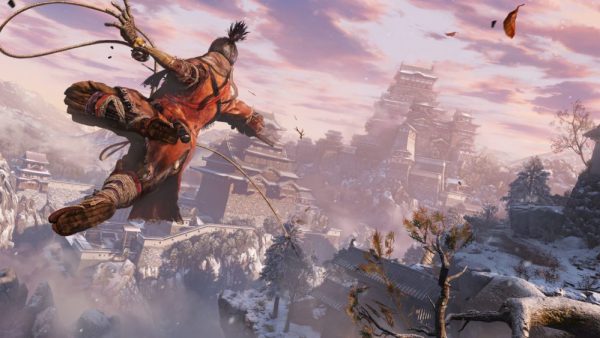
Sekiro features a ton more verticality than a Souls game, which have mostly been focused on ground level stuff. From pretty much the very beginning you have access to a grappling hook, which you can use to jump up to rooftops, trees, or otherwise unreachable areas.
The level design of Sekiro is completely built around the idea of the grappling hook, and there are tons of opportunities for taking enemies down with stealth before engaging them.
The ability to use a grappling hook completely redefines the way you play this kind of experience, and suddenly you have to think more vertically, taking into account the positioning of enemies, possible escape routes, and alternate pathways.
You Can Swim
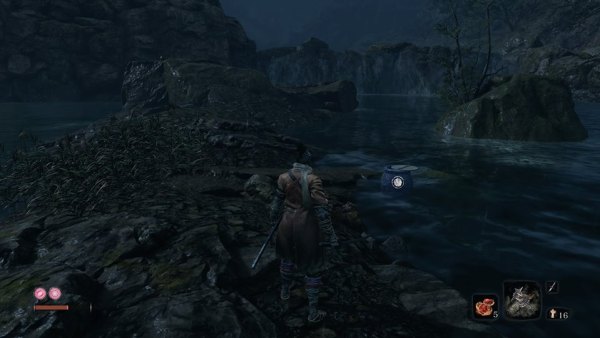
That’s right, believe it or not, you can swim in a FromSoftware game. In fact, you can do more than swim you can even attack in the water, which is good since there are certainly enemies in the water that’ll attack you.
Having the ability to swim open up even more options for exploration and finding alternate pathways, and the Wolf is just as agile in water as he is on the land. Luckily, FromSoftware has done a good job of making swimming feel like a natural extension of Sekiro’s core gameplay, rather than just a chore to get through.
